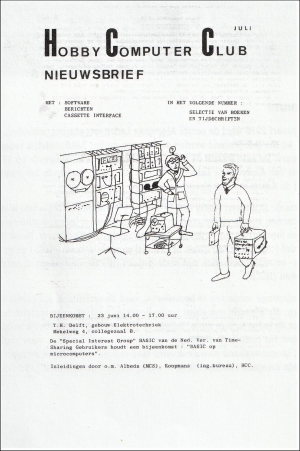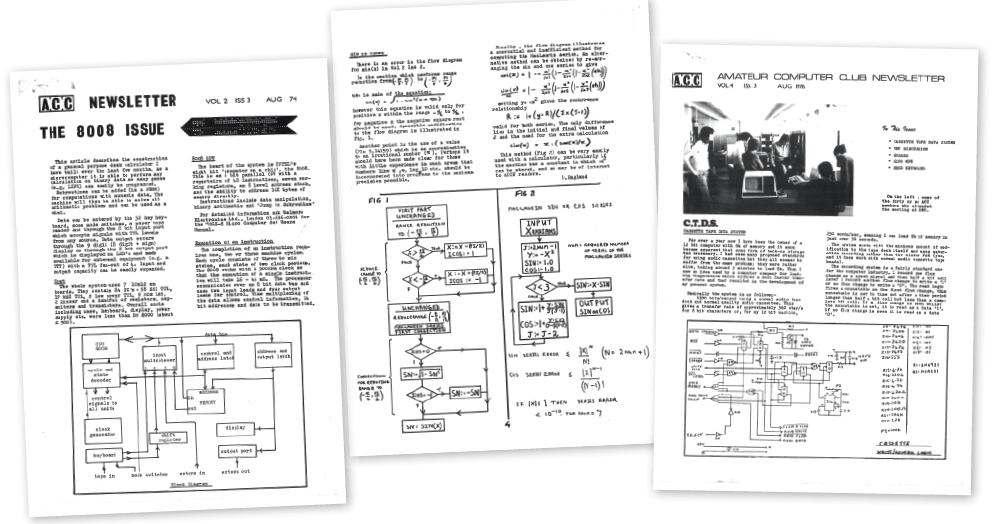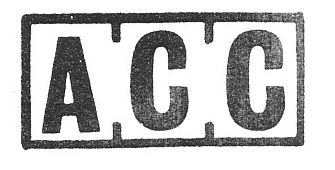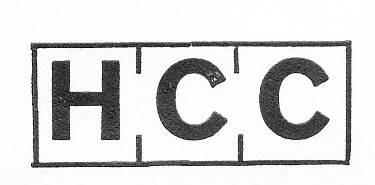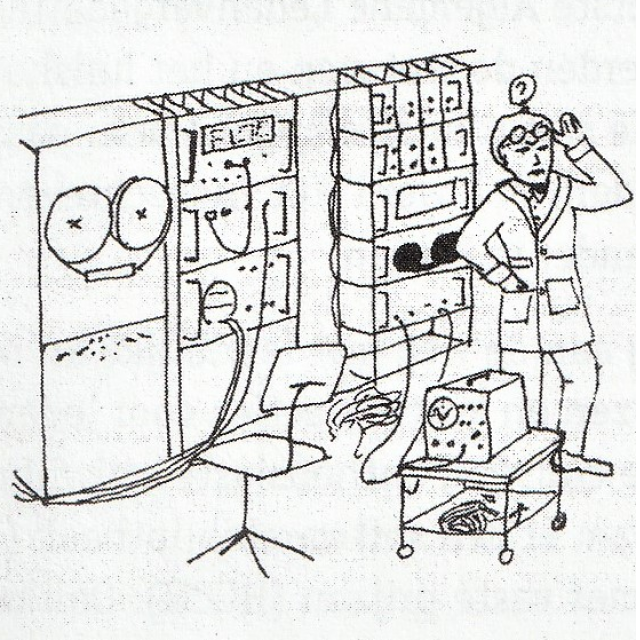
While cleaning out his garage, HCC founder Dick Barnhoorn discovered a box with documents from the association’s turbulent early days. A phone call to PC-Active was enough to arouse our curiosity and write down some interesting anecdotes.
Walter Wijnhoven
In 1977, Jimmy Carter turned 39ste president of the United States, Elvis Presley died and Father Abraham celebrated successes with his Smurf song. On April 27 of that year, another memorable event took place: the founding of HCC. This happened in Leiden at the home of Dick Barnhoorn, an honorary member in 2023 and still active in various interest groups. He tells PC-Active about the adventurous early days.
Special object
There is a special object on the kitchen table, found while cleaning out the garage. “This ‘portable computer’ was on the board table on the very first HCC day as an example of how to build a PC,” says Dick. “As a student of mathematics and computer science, I got the idea, after which I screwed and soldered everything together. I was able to do that as an electrical engineer, after my previous HTS Electrical Engineering course. But I didn’t have the money to buy all the necessary parts and the project was never realized. For data storage I had one autoreverse added a cassette recorder – the floppy had not yet been invented – to allow computer-controlled back and forth.”
From mainframe to self-build
Early HCC members did not yet have their own computer, or at most they had built it themselves. Home computers such as the Commodore PET, Tandy TRS 80 and Apple II were very expensive. Dick: “As a student I had access to a computer center with a huge computer center mainframe was standing. I also used it for private purposes, such as making lists of my collection of science fiction books. In the meantime, I saw that computers were becoming cheaper and smaller and that I could also do the same calculations with a PDP-8, a 12-bit minicomputer.” An article in a magazine gave Dick an idea.
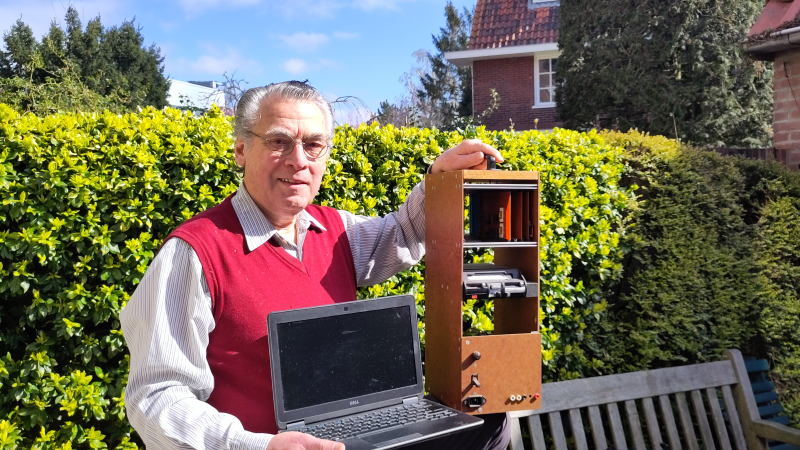 |
| Dick Barnhoorn with his ‘portable computer’ on the right |
Amateur Computer Club
“I read in the British electronics magazine Wireless World about the Amateur Computer Club, an initiative of Mike Lord in 1973. I became a member and was sent the ACC Newsletter. The ACC’s project was to make its own computer with ordinary TTL circuits, small ICs that we called ‘woodlice’. A complete construction schedule was published. I realized that now anyone(!) could make computers, not just Apple founders Steve Wozniak and Steve Jobs. Thus, the ACC became the source from which HCC emerged. The ACC also organized meetings and excursions and had a hardware service so that members could purchase parts that were difficult to obtain or too expensive elsewhere. All these activities have been copied in HCC.”
The establishment of HCC
‘Everyone can make a computer now, why don’t we have such a club in the Netherlands?’ Dick thought. He sent a letter to radio electronics hobby magazines to the effect: ‘Isn’t it time to set up a computer hobby club in the Netherlands?’ The letter was published in Computable, Automatisering Gids, Radio Elektronica and Radio Bulletin. As proof, Dick shows the carbon copies of that letter, neatly kept in a folder. Following the many responses, by letter and telephone, a group of like-minded people quickly emerged. “On April 27, 1977, I convened a meeting with Leiden students Gerrit Slot and Rob van Spaandonk, and Delft student Jaap van Duffelen. “We just had to do it,” we said to each other, making HCC a reality. Gerrit became chairman, Rob secretary and I treasurer with responsibility for the newsletter.”
| |
|
|
The first newsletter
The first Newsletter appeared in July 1977 in an edition of 200 copies and consisted of just three sheets of A4, stapled together to form an A5 booklet. At that time, HCC had twelve members. “Jaap had taken my folder with sample copy home,” Dick remembers. “At the next meeting it turned out that he had had the entire newsletter typed up by his wife and copied 200 times at a printer. However, the diagrams that I had placed in an article about circuits had been forgotten, so I added them by hand in all 200 copies. Jaap had filled the back page with an advertisement for his own company: MRLectronics. He was selling a computer kit based on a Motorola 6800 processor and needed publicity.”
The first newsletter contained Dick’s telephone number and it was noticeable. “Because I didn’t feel like walking downstairs every time, I installed a telephone line to my office.”
The second newsletter appeared in October, with all the names and addresses of the first fifty members. From March 1978 the newsletter was bimonthly and from 1980 every month. Until 1991, the editorial staff consisted of volunteers.
Hammerbeat and Daisywheel
“I made the next issue on a hammer typewriter, using whole and half spaces to fit and measure to fill out the columns. That could be better done by a computer. That’s why I rented my brother-in-law’s HP 9825 for a few days every second month, a programmable calculator with 32 characters on the display. I used it as a word processor by writing two programs for it. The first one made me editing facilities could insert and the second filled out the lines and printed the text on a daisy wheel printer. I still have those programs.” In practice, Dick was treasurer and secretary, compiled the complete newsletter and organized meetings. The statutes were based on the association statutes of his sister’s stamp club.
Membership administration
One became a member by transferring the contribution and that involves administration. Dick: “Fortunately, a member came forward, Piet Mansvelt Beck, who had a modest administration office at home (next to his job) and wanted to automate it. He bought a Heathkit kit, learned to solder and built his first computer. He himself wrote the software for the membership administration with a cassette recorder as input and a cassette recorder and digital printer as output that could also print labels on chain, necessary to send the newsletters (neatly sorted by zip code). Every few weeks I cycled to Pijnacker to add the newest members to the file. Piet has been doing this work for years, with increasingly better equipment.”
To the Efficiency Fair
The brand new HCC was soon able to go to the Efficiency Fair. “The organizer asked if we wanted to be at the fair in the fall of 1977, where more and more computers were on display. He had heard about HCC and offered a free booth. I told him about an idea I had been thinking about for a long time: driving model trains, for which I had already come up with a concept of hardware. At the next HCC meeting I stood on a chair and asked: ‘the Efficiency Fair wants us to show computer-controlled trains, who wants to help with that?’ Everyone immediately raised their hands and we had the first Interest Group – then User Group – HCC!m (model building automation), which is still going great.”
On track
One of the members, Wim Bolkenstein, was an electronics engineer. He developed the electronics for the first model railway and made the printed circuit boards. Another member, Rein Heesterman, wanted to automate his own model railway, but knew nothing about electronics or computers. He supplied a carpeted table with legs for spotlights, and arranged free rails, switches and trains through Märklin. We spent an evening soldering together PCBs – I still have them here, a square piece of plywood with a circle of rails on it – which we tested by making the train go in circles. We had an Apple II computer on loan from importer Romka and literally got everything on track in time for the fair.”
Short circuit!
The computer-controlled train was delayed at the fair. “One power transistor after another burned out, causing a short circuit in the track. We had been so busy with soldering that we had not paid enough attention to the software. The program was written in BASIC, but the computer was much too slow with a clock frequency of 1 MHz. We used a detection system where the train moved from sector to sector. Due to the long response time, it took a while before the circuit in question was powered up. Therefore, the train could only move slowly, otherwise even a stop signal would be too late. To be able to show some speed every now and then, we secretly built in a manual control…”
Customs
Shortly after the Efficiency Fair, the railway went on a trip to a hobby fair in Brussels. “Bought by my brother-in-law with his caravan. In the evening in my hotel I translated a number of frequently recurring parts of the program into Assembler, which ran well on the Apple II. This made the whole program a lot faster. A disappointment was that our stand during that fair received an unexpected visit from Belgian customs, who wanted to know whether the model railway and the computer had been cleared at the border. We still had to file a tax return, which cost us 200 guilders. Our 2,000 members at that time each contributed a dime.”
| |
|
HCC days
On October 29, 1977, Dick organized the first HCC day in the Trianon Hall Center on the Utrecht Oude Gracht, where all sixty members came. MRLectronics and Ingenieursbureau Koopmans were the only exhibitors. There were more than 200 visitors in total and the rented space immediately turned out to be too small. A student from Utrecht, Rob Bronckers, arranged for the next HCC day to be held in the De Uithof university center. He would organize the event, which continued to grow, for many years afterward. Dick: “That second HCC day in 1978 was officially called ‘HCC Microcomputer Day’ and instead of the expected 500 visitors, more than 2,000 came.” The third HCC day was in Het Turfschip in Breda, with 23 participating companies. From 1981 onwards, the HCC days (which now lasted up to three days) were held annually in the Utrecht Jaarbeurs. At its peak, more than 100,000 visitors and 350 exhibitors attended, accompanied by 800(!) volunteers. Due to the enormous influx, train and car traffic around Utrecht was completely disrupted.
Like father like daughter
After the first turbulent HCC years, Dick moved to Amsterdam and got a busy job with a lot of travel time. He resigned as a board member in 1981. “Fortunately, a new volunteer came forward, Cor Stapel, who became treasurer and took care of the logistics for the newsletters, including sending old issues to new members. Despite the rapidly increasing volume, he has done this for years.” In addition to being an honorary member, Dick is an enthusiastic member of various IGs, including HCC!forth, HCC!apple and HCC!genealogy. “Home automation and Open Source also fascinate me. Of course I am also a member of HCC!m. I often took my children to fairs and one of the most beautiful things you could show was model railways.” That has paid off, Dick experiences. “My daughter graduated cum laude in Artificial Intelligence in October 2022 and now works at the NS. So those trains again…”
For an impression of the illustrious HCC days, visit:
https://youtu.be/GxDIBL-wd9g
https://youtu.be/pZ6mkxDtW24
